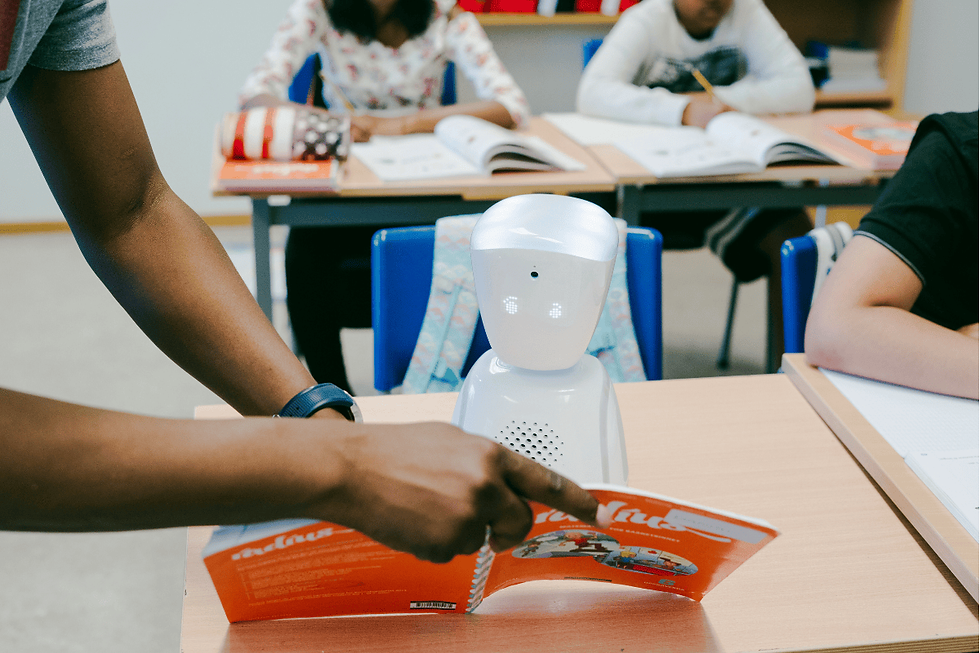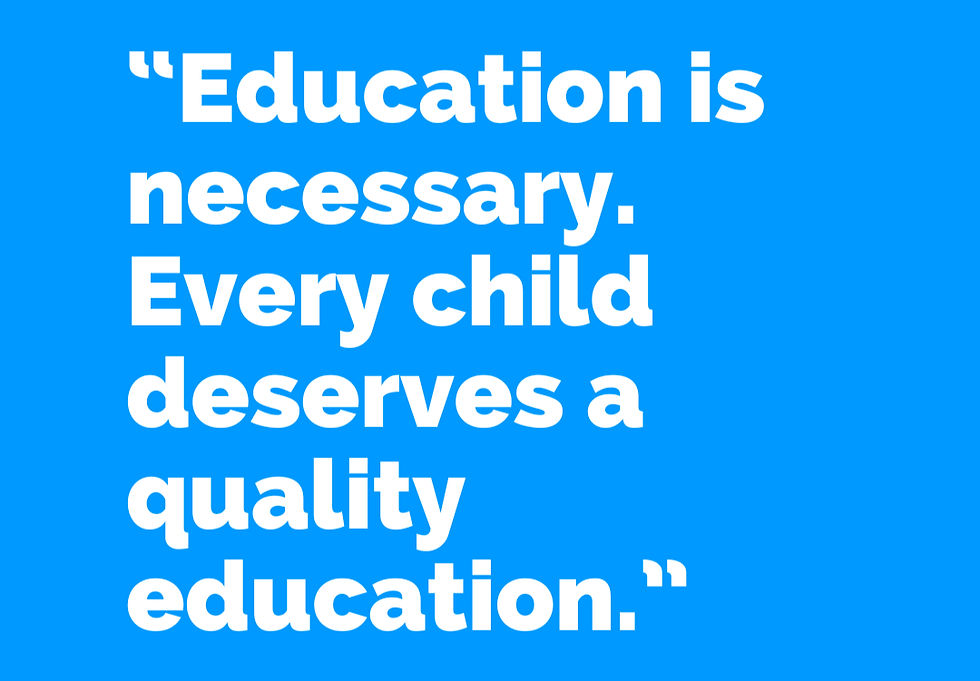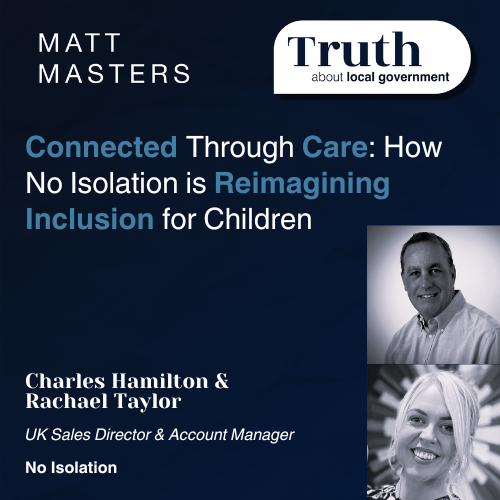Connected Through Care: Reimagining Inclusion for Children with No Isolation
- truthaboutlocalgov
- Jul 14
- 6 min read
Updated: Jul 17
In an era where digital tools are often met with scepticism particularly in the education sector No Isolation is turning that perception on its head. Rather than creating distance, they are using technology to build meaningful bridges between children and their classrooms, their peers, and the wider school community. Their work is a powerful reminder that when used thoughtfully, technology can be a force for inclusion, empathy, and connection.
At the recent Local Government Conference, Charles Hamilton and Rachael Taylor from No Isolation joined Matthew Masters to discuss how their AV1 telepresence robot is reshaping the educational experience for children who are unable to attend school due to long-term illness, mental health challenges, or other complex needs. These children, often at risk of social isolation and educational disadvantage, are being reconnected to their learning environments in ways that are both innovative and deeply human. Their message was both powerful and timely: inclusion is not just about physical presence in a classroom it’s about emotional connection, social identity, and the fundamental human right to belong. As local authorities continue to navigate the pressures of delivering equitable education in financially constrained environments, AV1 offers a compelling, compassionate solution that ensures no child is left behind academically or socially.
A Mission Rooted in Belonging
No Isolation’s mission is both straightforward and deeply human: to ensure that every child, regardless of their circumstances, has access not only to education but also to the social fabric of school life. This dual focus on learning and belonging is what sets their work apart. It recognises that education is not just about academic attainment it’s about relationships, identity, and the sense of being part of a community. As Charles Hamilton explained:
“It’s about learning, but it’s also about belonging. That feeling of being part of something is absolutely critical to children’s education and their reintegration.”
The AV1 robot is a small, discreet device that sits in the classroom on behalf of the child. Controlled via a secure app, it allows the child to see, hear, speak, and even raise their hand in class. It also includes a passive mode for days when the child may not feel well enough to participate actively but still wants to be present. This isn’t just about remote learning it’s about maintaining a child’s identity and connection to their peers.
What makes AV1 unique is its focus on presence rather than performance. It’s not a surveillance tool or a virtual classroom platform it’s a bridge that keeps children emotionally and socially tethered to their school life, even when they can’t be there in person. It allows them to remain part of the daily rhythm of school life from lessons and assemblies to informal chats and birthday celebrations ensuring they are not forgotten.

Overcoming Barriers to Adoption
Despite its clear benefits, introducing AV1 into schools hasn’t been without its hurdles. One of the most common concerns from educators is around privacy particularly the fear that the robot might record lessons or monitor teaching practices. These concerns are understandable, especially in a sector where trust and safeguarding are paramount. Charles acknowledged this challenge:
“Teachers are understandably wary of technology that appears to be watching them. But once they understand that AV1 doesn’t record or store any data, the resistance usually fades.”
To support adoption, No Isolation has built a team of customer success managers many of whom are former teachers who work directly with schools to build confidence and trust. Their role is to demystify the technology and ensure that educators feel supported, not scrutinised. This hands-on, empathetic approach has proven effective in overcoming initial scepticism. By offering personalised training, addressing concerns head-on, and showing the real-world impact of AV1, No Isolation has helped schools across the UK embrace a tool that is as practical as it is transformative. Their team also provides ongoing support, recognising that each school is different and that successful implementation requires flexibility, patience, and partnership.
Real Stories, Real Impact
Perhaps the most compelling evidence of AV1’s value comes from the stories of the children it supports. Rachael Taylor shared one such story about a young girl in the North East, referred to as “Emma,” who was undergoing cancer treatment and had to shield at home for several months.
“Her parent told us AV1 gave her a reason to get up in the morning. That sort of feedback reminds you how powerful inclusion is.”
Emma’s classmates welcomed her virtual presence with open arms taking turns carrying the robot, including her in conversations, and even bringing her along to birthday parties. It was a powerful reminder that education is about more than just curriculum it’s about community, friendship, and being seen. These stories are not isolated incidents. They are part of a growing body of evidence both qualitative and quantitative that shows how AV1 is helping children stay connected, maintain their confidence, and transition back into school life more smoothly when they’re ready.

Support That Goes Beyond the Tech
No Isolation’s commitment to inclusion doesn’t stop at delivering a robot it begins with a holistic, people-first approach that wraps around every child, family, and school involved. Their model is built on the understanding that technology alone cannot solve complex social challenges. Instead, it must be paired with thoughtful, ongoing support that empowers users and builds trust. From the moment a school or local authority engages with No Isolation, the onboarding process is designed to be inclusive, personalised, and child-centred. Whether AV1 is provided through a council initiative or via a partner charity, families are welcomed with warmth and clarity. They receive detailed guidance on how the robot works, what to expect, and how to make the most of the experience. This initial phase is not just technical it’s emotional, helping families feel reassured and supported during what is often a difficult time.
Schools are never left to navigate the technology alone. Each institution is paired with a dedicated customer success manager often someone with a background in education who brings both technical expertise and a deep understanding of classroom dynamics. These professionals offer tailored training sessions, troubleshooting support, and regular check-ins to ensure the robot is being used effectively and confidently. They also help schools address recurring challenges, such as teacher hesitancy, staff turnover, or the need to reintroduce AV1 at the start of each academic year.
“Every child deserves to be seen and heard—even when they can’t physically get to school,” said Taylor.
To further strengthen this support, No Isolation has developed the AV1 Academy an online resource hub packed with practical tools and insights. Educators and policy leads can access downloadable templates, parent communication guides, safeguarding materials, and best practice tips developed in collaboration with other schools and local authorities. This ensures that users are never alone in their journey and can draw on a growing community of experience and expertise. This level of support transforms AV1 from a piece of hardware into a meaningful service. It’s not just a robot it’s a partnership, a shared commitment to inclusion, and a tangible expression of care for children who need it most.

A Call to Action for Local Authorities
With more than 1,700 children using AV1 robots every day across the UK, No Isolation is proving that meaningful inclusion is not only achievable it’s scalable, sustainable, and cost-effective. The AV1 robot is a low-cost, low-disruption intervention that integrates seamlessly into existing classroom routines. Teachers don’t need to change their lesson plans or adopt new platforms the robot simply acts as a proxy for the child, allowing them to participate in school life in real time.
“This is a low-cost intervention that causes no disruption for teachers. If you want to see it in action, we’ll bring a robot to you,” said Hamilton.
In today’s climate, where local authorities are under immense financial and operational pressure, every investment must deliver measurable value. AV1 aligns perfectly with the evolving priorities of public procurement, particularly the emphasis on social value, equity, and community wellbeing. It offers a way to support vulnerable children without placing additional strain on teaching staff or school budgets.

More importantly, AV1 helps councils fulfil their duty of care. It ensures that children who are often at risk of being forgotten those shielding due to illness, struggling with anxiety, or recovering from trauma are instead remembered, included, and supported. It’s a proactive solution that keeps the door to education open, even when life circumstances make physical attendance impossible. This is more than a piece of technology it’s a statement of intent. A commitment to ensuring that no child is left behind, no matter their circumstances. For local government leaders shaping the future of education, AV1 represents an opportunity to lead with compassion, innovation, and impact. It’s a chance to embed inclusion into the heart of education strategy and to show that every child matters not just in policy, but in practice.




